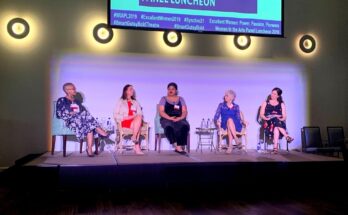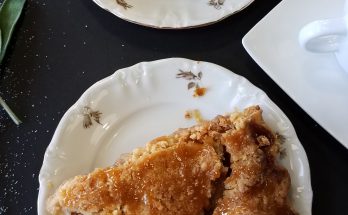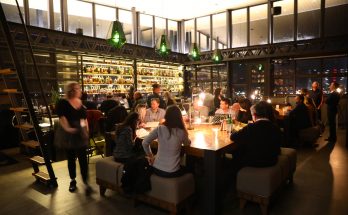Love him or hate him, it’s hard to think of Memphis without Elvis Presley, its most famous son. To his credit, Elvis never felt he outgrew his hometown, even after becoming one of the biggest stars in the world. His family home, Graceland, which is on the National Register of Historic Places, gives visitors an interesting glimpse behind the black velvet curtain of his celebrity.
Whether you’re a devoted fan or a hipster in search of a kitschy holy grail, Graceland — one of Memphis’ most popular tourist attractions — delivers a hunka hunka burning surprises.
The first is that it’s not surrounded by the winding streams and oak-lined pathways you’d expect from a rock ’n’ roll Tara. It’s down a side street, between a couple of strip malls. And it’s kind of hard to find. Here’s a hint: If you get to the blue barbecue restaurant with “TLC I *heart* Elvis” on its chimney, you’ve gone too far south.
Once you’ve found the proper turnoff to the parking lot and visitors’ center, you may be amazed by the number of activities Graceland offers. According to Foursquare app users, the best ticket is the Graceland Platinum Tour ($36 adults; $32.40 senior citizens and students; $17 ages 7-12), which gives access to the mansion, and Elvis’ airplanes and car collection, among other attractions. If you check in on Foursquare, you’ll also unlock a special souvenir gift (we got a poster of young Elvis that’s pretty sweet).
Go see the customized airplanes first if you want an apt metaphor for Elvis’ meteoric rise to fame. Only two people at a time are allowed to view his first custom jet because it’s so cramped. In contrast, the tricked-out Lisa Marie II is like a flying tour bus, with gold-plated sinks, toilets and seat belts, a boardroom, several bedrooms, even a bar (though Elvis drank soft rather than hard drinks).
You need to take a shuttle to see the house museum, and they’ll hand you an audio tour as you board. It’s a great soundtrack to the Elvis experience, but you can’t take it with you. Signs posted insist the audio tours will only work on the property.
You’d think that Graceland would be a sprawling monument to excess, but it’s surprisingly modest — at least from the outside. Inside, it’s obvious that the house is exactly as Elvis left it. It hasn’t been scrubbed and sanitized. It’s a living time capsule that’s firmly rooted in the early 1970s.
Elvis purchased the two-story home as a young man. As he found success, he expanded the main house and added outbuildings. The tour only encompasses the areas guests saw on a regular basis, respecting Elvis’ rule that only family got to see the second floor while he was alive. Everyone else had to wait in the foyer for Elvis to descend from his blue velvet lair, something daughter Lisa Marie (who narrates much of the audio tour) says was an awesome sight.
Elvis’ interior design aesthetic is a mix of the practical (the best hangout space is next to the kitchen) with the slightly weird (big-eyed monkey dolls and clown statues) to the downright bizarre (shag carpet on the ceilings so that he could sing or record anywhere and not get echoes).
A good Southern boy, Elvis never forgot his mother, for whom he decorated a bedroom and bathroom in girly frills and poodle wallpaper. He loved hanging with his boys in the “Jungle Room” (monkeys, fake fur tiger seats and a waterfall just off the kitchen) and downstairs pool room, which looks like a bordello with its heavy tapestry-draped walls and ceiling. And he liked keeping on top of current events. His blue-and-gold TV room has three TV sets side-by-side on one wall (because he heard the president watched broadcast news that way). It also features his record collection and personal logo/motto “TCB” (Taking Care of Business) painted alongside a lightening bolt on the wall. By the way, TCB pops up everywhere — on his microphones, jumpsuits and airplanes — and if you really like it, pick up your own branded apparel or trinket at one of Graceland’s numerous, themed gift shops.
Common areas, like Elvis’ racquetball court and office, have been converted into museums of film and music artifacts, jumpsuits, gold records and television interviews. Also on display is some truly kitschy fan art and letters from people still mourning his death.
And then there’s the land. Acres of land that he raised horses on. And a pool area connected to a meditation garden where Elvis, his mother and father are buried, surrounded by flowers and gifts from individual fans and Elvis fan clubs from around the world.
After hearing funny anecdotes about Elvis on the audio tour — like how he and his friends used to race golf carts and lawn mowers in the backyard and often took their low-fi drag races to the street — you’ll probably wonder where those items are.
Head back to the main Graceland strip and the Elvis Car Museum to check out his souped-up mini-machines, automobiles and massive tractor. It’s telling that one of his earliest cars was a pink convertible Cadillac. Clearly, Elvis was no wallflower, but it must have taken some guts for a manly man to choose a pink car in the 1950s. Subsequent cars — a purple Caddy, a pink golf cart with a fringed roof and a Batmobile-looking ’70s sedan originally commissioned by Frank Sinatra — are an interesting testament to his peacock-like obsession with appearance and accouterments.
There are several other mini-museums, all attached to gift shops, that fans can meander through as well as restaurants. But to do so would take all day. You can see the house museum, the airplanes and cars in less than two hours.
Graceland is a few miles from Memphis International Airport, so the next time you are in town or have a long layover, swing by. It’s a fun — and slightly freaky — memorial to the King of Rock ‘n’ Roll. Details: elvis.com/graceland/.
READ THIS: Memphis cast means Fox homecoming for 2 Georgians



